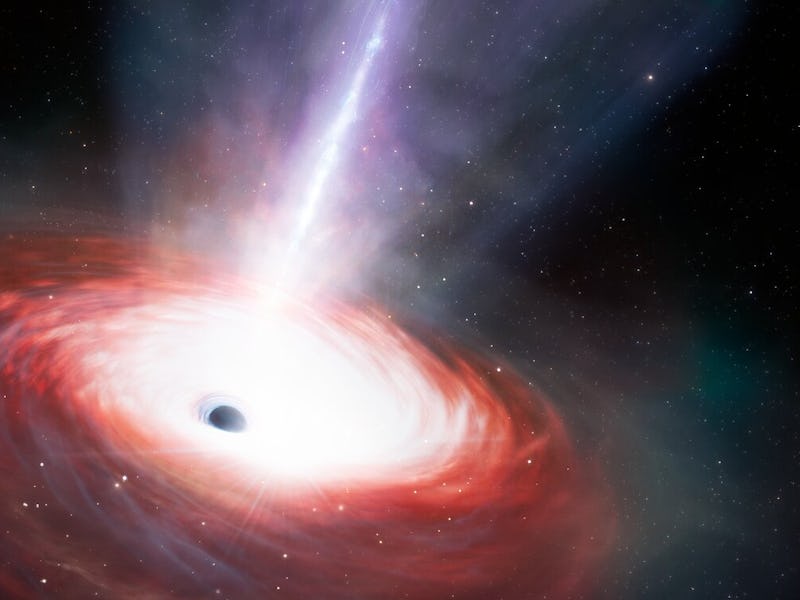Webb Telescope Discovered An Ancient Black Hole With A Voracious Appetite
How did galaxies get their hearts?

The super-heated material churning around an ancient black hole shined brighter than astronomers previously thought was possible.
There’s a theoretical limit to how bright gas and dust can get when spinning around the edge of a black hole. It’s called the Eddington limit. But the black hole at the center of new research, described in a paper published Monday in the journal Nature, breaks this barrier — and by a large margin at that.
Black hole LID-568 appears to be accreting, or consuming, matter at a rate 40 times its Eddington limit, astronomers found when they observed it with the James Webb Space Telescope (JWST).
“The most exciting part of this research is that we expect to find more of those exotic sources in the near future!” Hyewon Suh, lead author and astronomer based at the International Gemini Observatory, a program of the National Science Foundation’s NOIRLab, in Hawaii, tells Inverse via email.
This artist’s illustration depicts a small galaxy from the early universe, and highlights the rapidly-feeding black hole dwelling at its center.
JWST is designed to, among many things, peer at distant light that has traveled billions of years, across most of the universe’s lifespan, to reach Earth.
This far-flung light is very old. LID-568’s light, for example, hailed from when the universe was just 1.5 billion years old, or just 10 percent its current age.
“During this time, we expect the black holes were likely growing rapidly, and the large-scale structure of the universe was actively evolving,” Suh tells Inverse.
During this epoch, called Cosmic Dawn, black holes may have been commonly feeding past their Eddington limits. If they were, that might explain how so many supermassive black holes formed in the first billion years after the Big Bang — and how our universe started to look the way it does today.
Gravitational anchors
The nature of ancient supermassive black holes affected how the first galaxies formed. Each of these massive collections of stars and dust is thought to host a supermassive black hole at its heart, which act as gravitational anchors.
Galaxies are like islands: without them, dust and gas would be awash, and wouldn’t sit long enough in one place where stars and planets would repeatedly recycle them into the myriad of life-giving elements that fill the modern universe.
Taking a fresh look
JWST offered astronomers a chance to focus on LID-568. NASA’s Chandra X-Ray Observatory found it alongside a population of old objects that were uniquely bright in X-ray emissions, but otherwise invisible in optical. JWST’s sensitivity to near-infrared allowed astronomers to hone in on the supermassive black hole.
“The discovery of a super-Eddington accreting black hole suggests that a significant portion of mass growth can occur during a single episode of rapid feeding,” Suh said in a NOIRLab announcement. This may happen regardless of the black hole’s origin story — whether or not LID-568 formed from the death of one of the first stars (called light seed) or the collapse of a primordial cloud of gas (known as heavy seed).
“We still don’t know (yet!) how LID-568 is able to exceed this limit. To investigate further, we plan to conduct follow-up observation with JWST,” Suh tells Inverse.
Further investigations into ancient supermassive black holes could reveal critical insights into how the early universe grew the beating hearts of its galaxies.